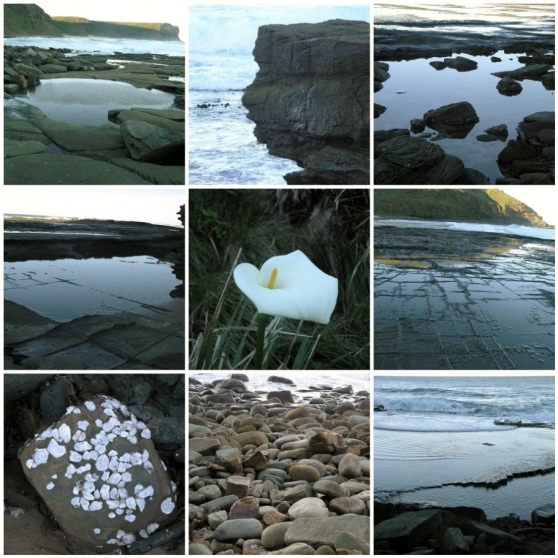This guest post, Honor Your Lineage, by Sage Cohen, is from her book Fierce on the Page which helps you become the writer you were meant to be. I am indebted to Sage for this piece that led to the creation of my free ebook, 36 Books that Shaped my Story: Reading as Creative Influence. I’m so grateful to Sage for being able to share this inspirational essay in full here. Sage is a writing mentor and support to me and many aspiring and practicing writers. Fierce on the Page and Writing the Life Poetic feature in my 36 influential books. Enjoy reading and I hope this piece inspires rich reflections on your literary lineage, as it has done for me.
I have always been magnetically drawn to the books I need as teachers. Recently I cleared a shelf and, with great reverence, placed on it the books I most love—the ones that have shaped me in the way that water shapes stones, almost imperceptibly over time.
Whenever I scan their proud spines all lined up in a row, I think of how this shelf reflects my literary lineage. These are the poets and writers whose work whispers directly into my ear to penetrate my being and reveal what I need to know about being a person and a writer. These are my literary ancestors and immediate family.
I consider each book with gratitude: Sharon Olds’s The Dead and the Living, the dog-eared, tear-stained poetry collection that I have been returning to since my early twenties when I so desperately wanted to write a collection of its caliber that I considered giving up poetry altogether; Lidia Yuknavitch’s The Chronology of Water: A Memoir, which sings through me as if its narrative were a plucked string of the sitar calling forth my own story in accompaniment; Kim Rosen’s Saved By a Poem, affirming my lifelong practice of poetry as sacred medicine; When Things Fall Apart, by Pema Chódrón, which has instructed me how to make the crossing from resistance to acceptance in my darkest moments.
This small literary collection, along with the rest of the books on my “lineage shelf” is a funhouse mirror reflection of who I am, what I love, and from where I have come. I imagine the little serif font letters swimming through my cells. The words that come through me now have breathed the amniotic suspended dreams of every word I have admired, allowed in, and sent back into the world. These titles are a bouquet harvested of my desire to enter the universal human experience through poem and story.
Here, in the authority and stability of its literary family, the title of my next project presents itself. It is shy, wobbly, unsure of whether to trust my hand. We sit together, and I listen. Take a few notes. A large fluff of dandelion seed drifts by my open window as the peas in the garden bed below nod in the wind.
By taking the time to name and appreciate my literary lineage, the next step on my path reveals itself to me. I wonder if that’s really all our writing asks of us: to know what we love, to listen, and to give ourselves over to what presents itself.
Be Fierce
I invite you to honor the books you love most by giving them their own shelf (or even their own pile). Then sit with them and appreciate how they have informed your vision, your craft, or your sense of direction in your writing life. Is something inside you lingering on the peripheries, wanting to come through? What work of yours belongs on this shelf, in this company? What knowledge have you gained from these books that now informs your own literary legacy?
* * * * *
Sage Cohen is the author of Fierce on the Page from Writer’s Digest Books and three other books. Her agency Sage Cohen Global crafts communication, education, and empowerment solutions that help people and businesses change the conversation. She serves writers at sagecohen.com and divorcing parents at radicaldivorce.com.
Read about the 36 books that shaped my story
This essay inspired a fabulous journey of revisiting the books that influenced my writing and life story. You can download my free ebook on my literary lineage and the 36 books that have shaped my story – just sign up with your email address in the box to the right or below. You will also receive updates from Quiet Writing and its passions. This includes personality type developments, coaching, creativity, writing, tarot and other connections to help express your unique voice in the world.
Quiet Writing is on Facebook and Instagram – keep in touch and interact with the growing Quiet Writing community.
If you enjoyed this post, please share via your preferred social media channel – links are below.
You might also enjoy:
Being ‘Fierce on the Page’ – a book review
36 Books that Shaped my Story: Reading as Creative Influence
How to know and honour your special creative influences
Feature and author image via FierceonthePage.com and used with permission and thanks.









